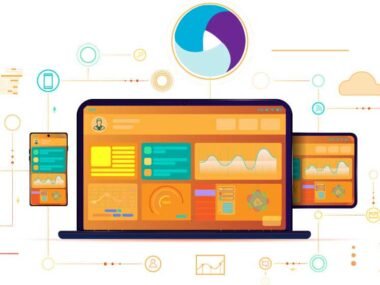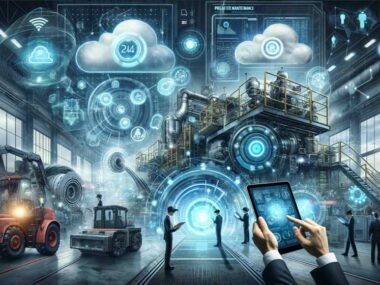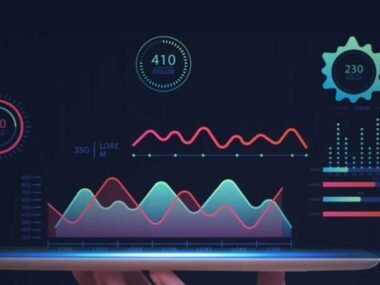Have you ever wondered how companies track when employees arrive and leave work? Many businesses still use paper or punch cards. But now, new tools like biometric facial attendance systems are changing that.
These systems scan a person’s face to record time in and out. They are fast, secure, and accurate. Whether it’s a small store or a large company, this technology can help.
In this blog, we’ll explain how these systems work, why they are safe, and how they save time and money for all types of businesses.
What Are Biometric Facial Attendance Systems?
Biometric facial attendance systems use a person’s face to record when they enter or leave a place. The system scans the face and matches it with stored data.
Once it finds a match, it logs the time and date. This means workers don’t need to carry cards or remember passwords. They just walk up to a screen, and the system does the rest.
This system is a type of biometric tool. Biometrics are ways to identify people using unique body parts, like fingerprints or eyes. A face is easy to scan and hard to fake. This makes it a smart and secure choice for tracking attendance.
These systems can also work in low light and still be very accurate. It’s a simple, touch-free way to keep records. More businesses are switching to facial scans because they are quick and reliable.
Why Accuracy Matters in Attendance Tracking
Being accurate is important when tracking time. If someone forgets to sign in or signs in for a friend, it causes problems. Businesses may lose money if they pay for time not worked.
That’s why facial attendance systems are helpful. They reduce errors by only allowing the real person to check-in.
Every face is different. These systems use advanced software to study many points on a face. It doesn’t just look at a photo, it checks for real, live features, making fake check-ins nearly impossible. This keeps the data clean and correct.
With more accurate data, companies can better plan work shifts, track late arrivals, and spot patterns in employee behavior. The facial recognition time clock is one way businesses are solving common attendance problems without extra effort. This tool helps companies work smarter and with fewer mistakes.
Boosting Security With Facial Recognition
Security is a big reason why many companies now use biometric systems. Traditional methods like swipe cards or PIN codes can be shared or lost. With facial recognition, only the person whose face is saved in the system can use it. That means no one can sign in for someone else.
This adds a layer of protection. It ensures that only the right people can access certain buildings or offices. It also helps prevent time theft, which happens when someone lies about hours worked. Facial recognition systems stop this by only letting real, present people check-in.
Also, many systems store face data safely. They use encryption to keep the data private. This means that even if someone tries to steal it, they won’t be able to read or use it. Secure data plus secure access makes this system a safe choice for all types of companies.
Saving Time and Making Work Easier
One of the best things about facial attendance systems is how much time they save. In the past, people had to line up to punch cards or log into a system. This could take a few minutes per person, especially during busy times. With facial recognition, the scan is almost instant.
There’s no need to touch a screen or enter a code. Employees just walk up, the system scans them, and they’re done. It’s simple and fast. This helps the workday start smoothly and without delays.
Managers also save time, they don’t need to check paper records or fix errors. The system records everything automatically. They can even check records from their phones or computers in real time. This means more time to focus on running the business instead of fixing attendance mistakes.
How It Helps Small and Big Businesses
Many people think this technology is only for big companies. But facial attendance systems are also great for small businesses. They are becoming more affordable and easier to set up. Even a small office can use one to save time and improve accuracy.
Small businesses can benefit from lower costs. With better records, they can avoid paying for fake hours or handling disputes about time worked. This makes the system a smart investment, even for companies with only a few workers.
Large companies use these systems too, often across many locations. They can manage all their staff from one main dashboard. This helps keep things organized and saves hours of work each week.
Whether big or small, all businesses want to be efficient. A good facial recognition system helps reach that goal.
Real-Time Data and Easy Reports
One key benefit of facial attendance systems is real-time data. This means managers can see who is at work right now. They don’t need to wait for reports at the end of the day. This helps when there are urgent tasks or schedule changes.
The system also makes it easy to create reports. With just a few clicks, you can see how many hours someone worked, who was late, or who missed work. These reports help make better decisions about staffing and scheduling.
Easy reporting saves time, but it also helps with rules. Some businesses must show they follow labor laws. With a system like this, they can easily prove work hours. Everything is logged clearly and safely, this kind of smart data helps businesses stay legal, fair, and ready for audits or checks.
Explore The Benefits of Biometric Facial Attendance Systems Today
Biometric facial attendance systems are changing the way we manage time at work. They are secure, fast, and accurate. These systems make sure only the right people sign in and out, which builds trust.
From small shops to large companies, anyone can use them to save time and money. With better records, fewer errors, and easy tools, businesses can work better every day. As this technology grows, it will keep making work life simpler and more secure.
Check out our other blog articles on other interesting topics!










